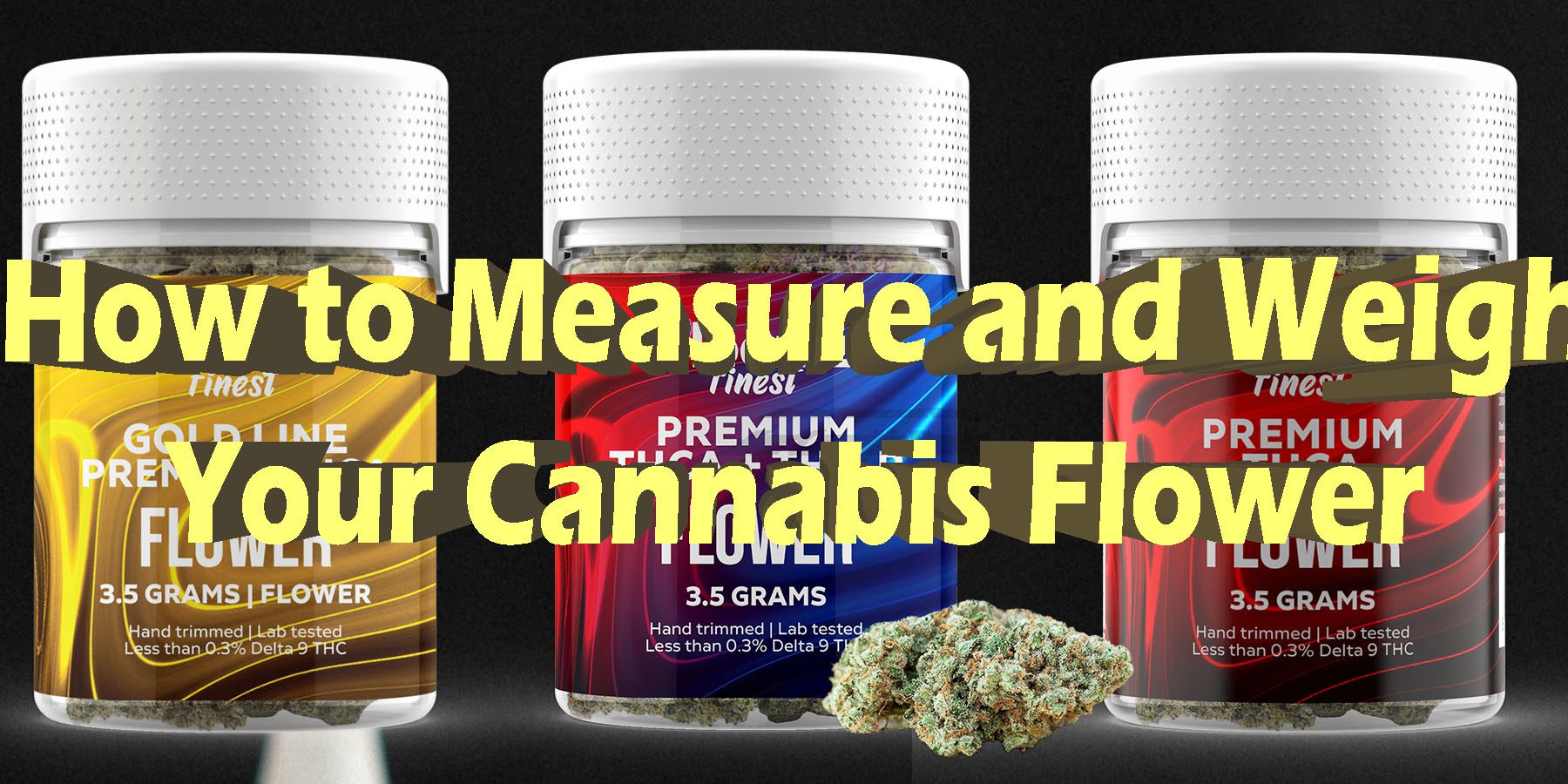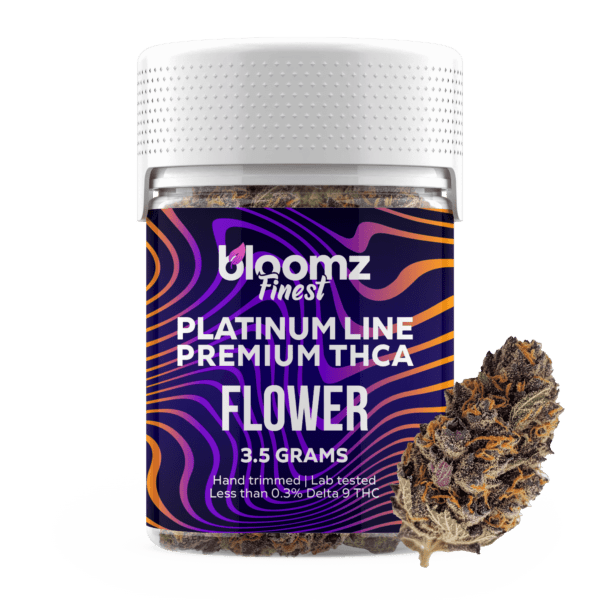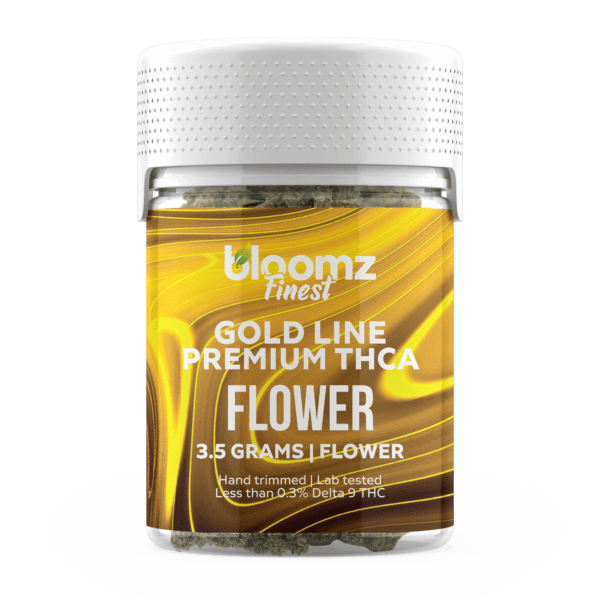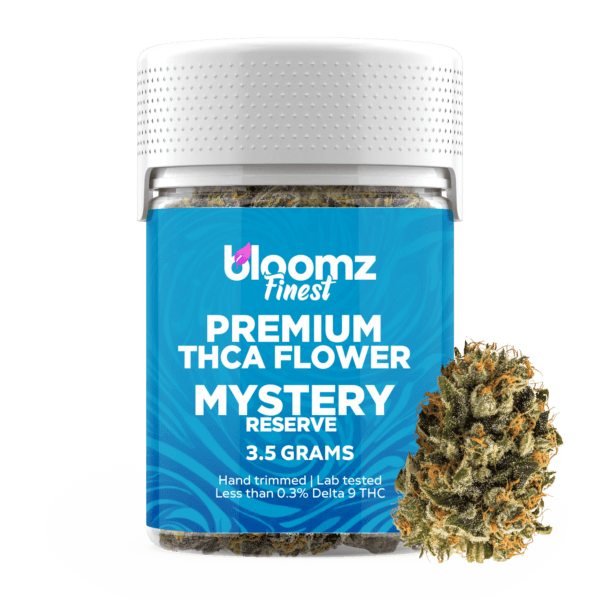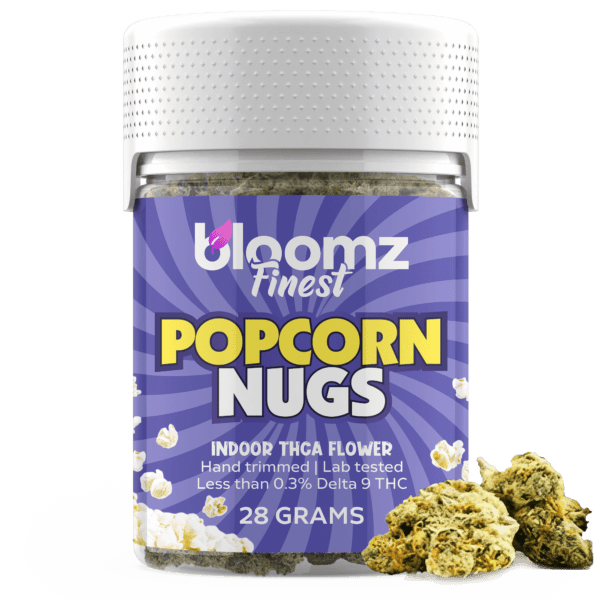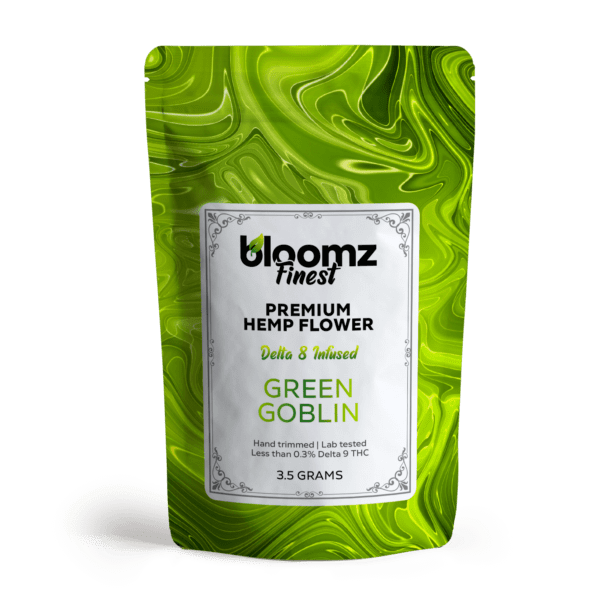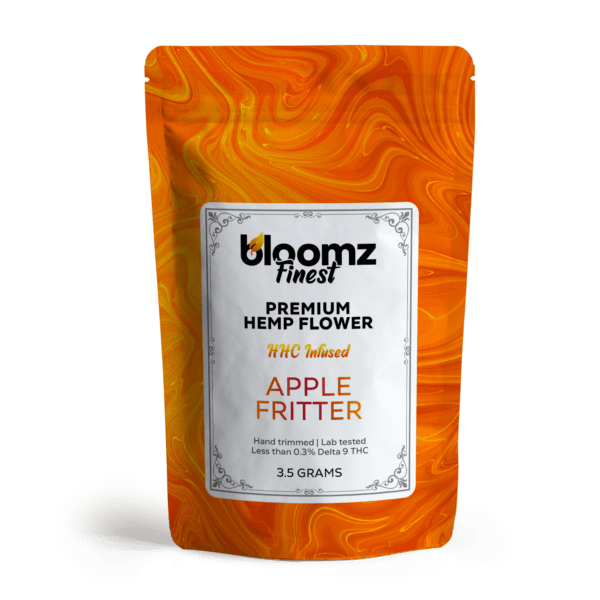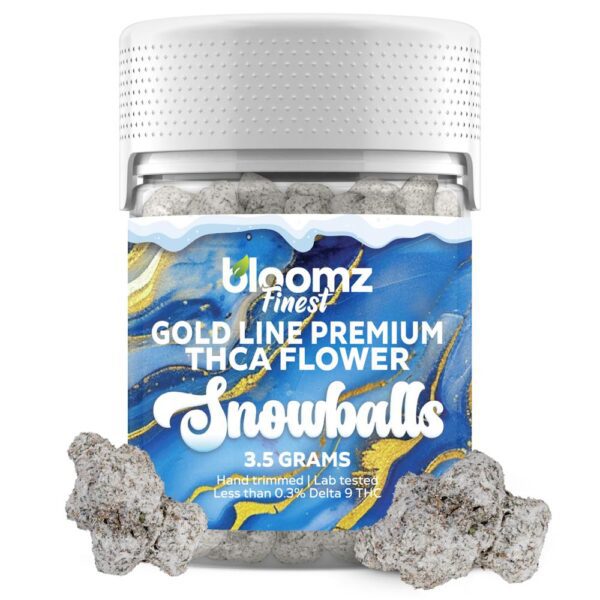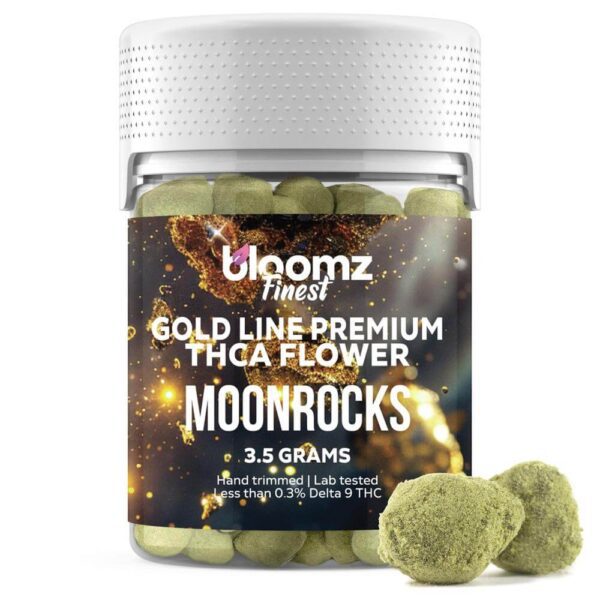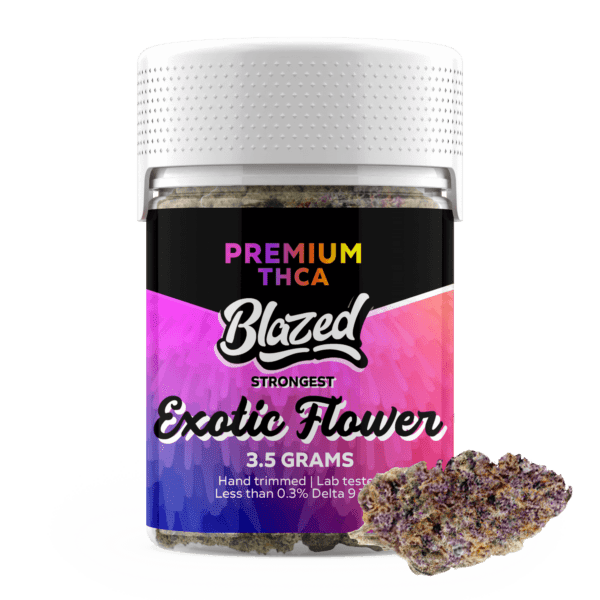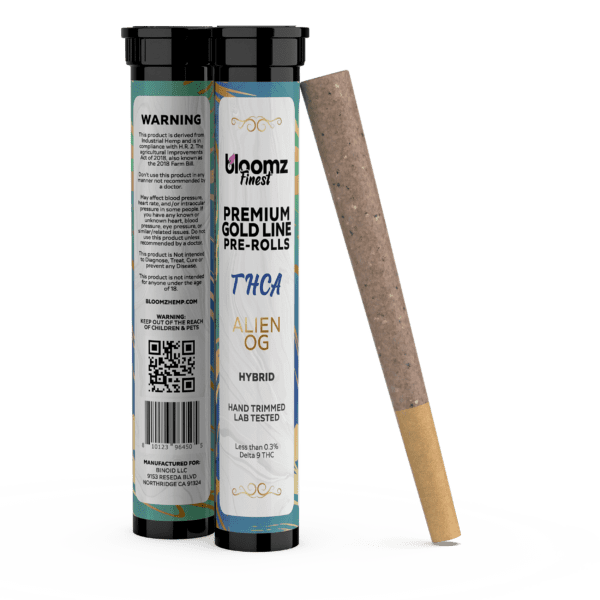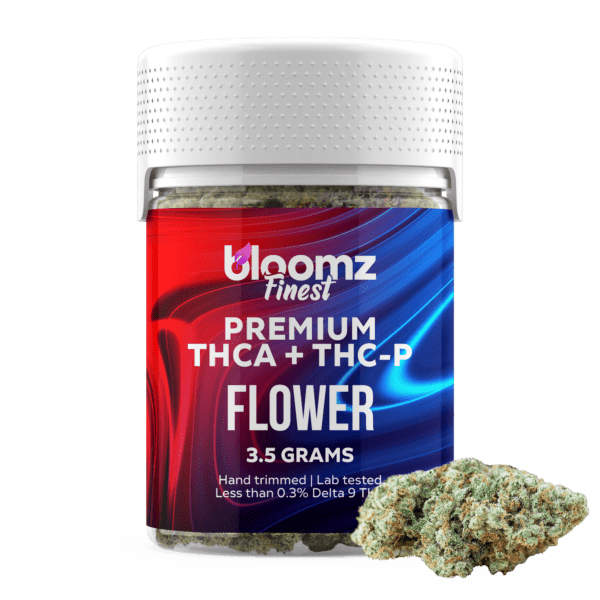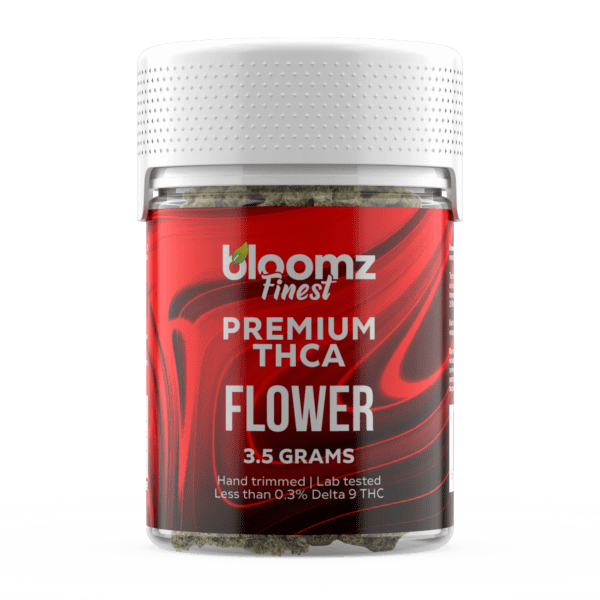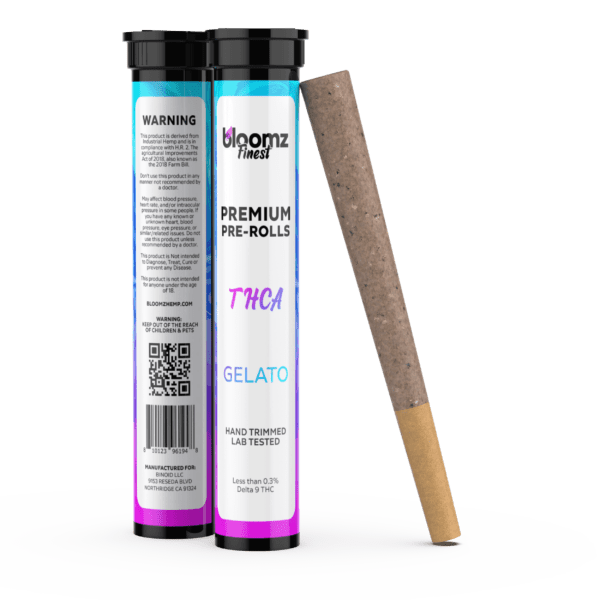Think about the last time you had a truly perfect session, where the mood was just right and the feeling of blissful relaxation was exactly what you were seeking. Now, consider trying to recreate that exact moment a week later, only to find the experience to be completely different—perhaps too intense, or surprisingly mild. Often, the mysterious variable in this equation isn’t the flower itself or even your state of mind, but something far more fundamental: the amount you actually used.
The common practice of ‘eyeballing’ a portion, judging a quantity by sight alone, is a game of chance in a world of stunningly diverse cannabis flower densities. A fluffy, airy bud can look like twice the amount of a small, dense one, yet weigh exactly the same. Stepping into a world of consistency and intention requires trading guesswork for grounding, a simple shift from visual estimation to precise measurement. This isn’t about removing the spontaneity from the ritual, but about adding a layer of mindful control, giving you the power to understand your consumption and replicate those perfect moments on your own terms.
To Buy Cannabis Flower Click Here
Recommended products
-
THCA Flower – Platinum Line
$49.99$79.99 -
THCA Flower – Indoor Exotics – Gold Line
$37.99$69.99 -
THCA Flower – Mystery Reserve
$41.99$79.99 -
THCA Smalls
$149.99$256.99
What’re We Actually Weighing? A Quick Look at Cannabis Flower!
Before we dive into the methods of measurement, it’s essential to understand the physical nature of the material itself, because what we see can often be deceiving. Cannabis flower is a botanical product, and like any agricultural good, it is subject to a high degree of natural variation. No two buds are exactly alike, even from the same plant. This variability is precisely why “eyeballing” a portion is such an inaccurate and often misleading practice. When you place a flower on a scale, you aren’t just weighing generic plant matter; you’re weighing a complex combination of physical attributes, each contributing to the final number on the display.
The most significant variable is the cannabis flower‘s density. This is influenced heavily by a strain’s genetics and how it was cultivated. Some genetics, particularly those from Indica-dominant lineages, tend to produce very tight, compact, and heavy bud structures that feel like dense little nuggets in your hand. Conversely, many Sativa-dominant strains have genetics that lead to more elongated, airy, and fluffy flowers, sometimes with “foxtailed” structures that are far less compact.
Think of it like the difference between a dense, fudgy brownie and a light, airy slice of angel food cake; they could take up the same space on a plate, but their weight and substance are vastly different. A grower’s techniques can further influence this. High-intensity indoor lighting, for example, can encourage plants to produce tighter buds than some outdoor grows. This means you could have two buds that appear to be the exact same size, yet one might weigh twice as much as the other, making a visual estimation a complete game of chance.
Next is the cannabis flower‘s moisture content, which is a direct result of the drying and curing process. Curing is essentially a controlled dehydration where the cultivator’s goal is to bring the flower to an ideal moisture level, typically between 10-12% of its total weight. If a producer rushes this critical stage and sells flower with a higher moisture content, it will be heavier, meaning you are paying for excess water weight. This not only impacts the value of your purchase but also makes the flower difficult to grind and smoke properly, and thus, dramatically increases the risk of mold.
On the other end of the spectrum is overly dry flower. While it may seem like you’re getting more volume for the weight, the experience will be degraded. The smoke will be harsh, and more importantly, the brittle trichomes will have likely snapped off in the bag, taking a significant portion of the flower’s potency with them.
Finally, we are also weighing the trichomes themselves, as these are the sticky, crystalline resin glands that coat the flower and contain the vast majority of its active compounds, the cannabinoids and terpenes. While microscopic, these glands have mass. A flower that is visibly “caked” or “frosted” with a thick layer of trichomes will be marginally heavier than a less resinous bud of the same size and density. In this sense, you are not just weighing plant fiber; you are weighing the very engine of the experience.
A higher density of trichomes suggests a higher potential potency per gram. These combined variables of density, moisture, and trichome coverage make it clear that our eyes are unreliable tools. The only way to truly know how much flower you have is to use a precise instrument to measure its mass.
The Vital Toolkit for Precision
To transition from estimation to accuracy, you need the right set of tools. While the list is short, each item plays a crucial role in ensuring your measurements are correct and your consumption is consistent. Investing in this basic toolkit is the first step toward becoming a more informed and mindful cannabis user.
The Digital Scale is Your Most Important Tool
The digital scale is the undisputed cornerstone of accurate cannabis measurement, serving as the bridge between guesswork and genuine understanding. Relying on any other method is like trying to measure vanilla extract for a gourmet recipe using a soup ladle; the tool is simply not suited for the required level of precision. However, not all digital scales are created equal, and to make an informed choice, it’s important to understand the different types, features, and levels of accuracy available.
Understanding Precision: The Gram vs. The Milligram
When selecting a scale, the most important specification is its readability, which’s the smallest increment of weight it can measure. This is where the distinction between a standard kitchen scale and a proper cannabis scale becomes clear.
The Tenth-of-a-Gram Scale (0.1g): This is the versatile workhorse and the absolute minimum level of precision required for measuring flower. It can accurately weigh out common amounts, from a half-gram for a personal joint to a full 3.5-gram eighth. For the vast majority of users, a scale with 0.1g readability is perfectly sufficient for ensuring consistency in their smoking or vaping sessions.
The Milligram Scale (0.01g): This is the specialist’s tool, offering a level of precision ten times greater than a standard decimal scale. This accuracy is essential for anyone interested in the practice of microdosing, where doses as small as 0.05g are common and cannot be accurately measured otherwise. Furthermore, for those who make their own edibles, a milligram scale is invaluable for precisely weighing the starting flower, which is the most critical step for calculating the potency of the final batch. While it might be overkill for simply weighing out a bowl, the investment in a 0.01g scale provides the ultimate in accuracy for all possible applications.
Choosing Your Style: A Look at Common Scale Types
Beyond precision, digital scales come in several common styles, each catering to different needs for portability, discretion, and stability:
The Pocket Scale: This is the most common and popular style for cannabis users. These devices are compact, typically the size of a small smartphone, making them easy to store or carry. They almost always feature a hinged protective cover that not only protects the sensitive weighing platform but often detaches to double as a convenient weighing tray. Pocket scales are widely available with either 0.1g or 0.01g precision, making them a perfect all-around choice.
The “Hidden” or Disguised Scale: For those who prioritize discretion, a variety of scales are designed to look like other common objects. You can find scales that look identical to a computer mouse, a small notepad, a CD case, or even a pack of mints. While these offer unparalleled privacy, it’s important to research their quality, as the focus is sometimes more on the novelty of the disguise than on the quality and accuracy of the internal components.
The Tabletop Milligram Scale: This style sacrifices portability for maximum accuracy and stability. These are larger, stationary units that often have bigger weighing platforms and may even include a clear draft shield to protect the platform from air currents that could interfere with a precise reading. These are the preferred choice for serious hobbyists, edible makers, or anyone who does all of their weighing at a dedicated station at home and demands the highest level of scientific precision.
Essential Features Decoded
Modern digital scales come with a standard set of functions that’re crucial for proper use, and so, understanding what these features below do is key to getting an accurate measurement every time:
The Tare Function: This is arguably the most-used feature. Pressing the “Tare” or “Zero” button resets the scale’s display to 0.00, even if there is an object on it. This allows you to place an empty weighing tray or container on the scale, press “Tare” to subtract the container’s weight, and then add your flower to get a measurement of only the cannabis flower itself.
The Calibration Function: Over time and with changes in temperature or elevation, a scale’s sensor can drift. The calibration function corrects this. Good scales come with a specific calibration weight (e.g., 50g or 100g). Following the instructions to enter calibration mode and place this known weight on the scale re-centers the sensor, ensuring its readings remain perfectly accurate. It’s good practice to calibrate your scale periodically.
The Mode/Units Button: This button allows you to cycle through different units of measurement. While scales can often measure in ounces (oz), carats (ct), and pennyweights (dwt), the universal standard for cannabis is grams (g). Ensure your scale is always set to “g” for a correct and understandable reading.
Overload Protection: Most quality scales have an internal mechanism to prevent damage if a weight far exceeding their capacity is placed on them. The display will typically show an error message like “O-LD” or “EEEE”. This feature protects the highly sensitive load cell that does the actual weighing.
Recommended products
The Grinder is Your Partner in Preparation and Consistency
While the digital scale is essential for knowing the quantity of your cannabis flower, the grinder is the fundamental tool for preparing its quality for consumption. To the uninitiated, it might seem like a simple device for breaking up buds, but its role is far more critical.
Grinding transforms the irregular, and sometimes dense, structure of a whole flower into a uniform, fluffy material with a vastly increased surface area. This consistency is the key to unlocking the full potential of your cannabis, ensuring an even burn when smoked, efficient heating when vaped, and accurate dosing when cooked with. Choosing the right grinder and using it correctly is an investment that pays dividends in every single session.
The Anatomy of a Grinder: Understanding the Pieces
Grinders are most commonly categorized by the number of pieces, or chambers, they have. Each style below offers a different level of functionality:
Two-Piece Grinders (The Simple Classic): This is the most basic and portable design, consisting of a single chamber. It’s composed of two interlocking halves, each lined with sharp teeth. You place a small bud inside, press the halves together, and twist. The ground flower remains in the same chamber it was ground in. While simple and affordable, this design means the grind can sometimes be inconsistent, and retrieving the fluffy material from between the sharp teeth can be a bit cumbersome.
Three-Piece Grinders (Adding a Collection Chamber): A significant upgrade in functionality, the three-piece grinder adds a dedicated collection chamber. The top grinding piece has a series of holes in its floor. As you twist, the flower is ground to a size fine enough to fall through these holes into the second chamber below, separating it from the grinding mechanism. This results in a more uniform consistency and makes it much easier to collect your ground material.
Four-Piece Grinders (The Connoisseur’s Choice): This is the most popular style among enthusiasts for one key reason: it includes a kief catcher. The four-piece design features the top grinding chamber, the middle collection chamber with its holes, but it adds a fine mesh screen at the bottom of the collection chamber. As the ground flower rests in the chamber, the very fine, potent trichomes (often called “kief”) are sifted through the screen and collect in the very bottom, fourth chamber. Over time, you can collect a significant amount of this potent kief, which can be sprinkled on top of a bowl or in a joint for an enhanced experience.
A Matter of Material: Choosing Your Grinder’s Build
Did you know that material a grinder is made from affects its durability, performance, and price? Well, now you do. Basically, the material directly influences a grinder’s resistance to wear and tear, impacting its lifespan and consistent shredding ability over time. Different materials also affect the friction and sharpness of the teeth, which in turn dictates the fineness and efficiency of the grind. Consequently, the choice of material significantly contributes to manufacturing costs and the overall market value. So, let’s cover these specific grinders you can find on the marketplace:
Metal Grinders: Typically crafted from aircraft-grade aluminum, zinc alloy, or occasionally titanium, metal grinders are the industry standard for their durability and performance. They feature sharp, precision-machined teeth (often diamond-shaped) that shred cannabis flower with ease and are resistant to wear and tear. A quality metal grinder provides a smooth, effortless grinding action and will last for many years with proper care, making it a worthy investment.
Wooden Grinders: Prized for their classic, natural aesthetic, wooden grinders offer a different feel. Instead of sharpened teeth, they typically use steel pins to shred the flower. While beautiful to look at and hold, they are generally less efficient than their metal counterparts. Wood is also a porous material, which means it can be more difficult to clean and may absorb some of the flower’s aromatic oils over time.
Plastic & Acrylic Grinders: These are the most budget-friendly and lightweight options, making them great for travel or for beginners who aren’t ready to invest in a more expensive piece. However, their durability is a significant drawback. The plastic teeth are prone to chipping or breaking, especially when grinding very dense cannabis flower, and they can wear down over time, reducing their effectiveness.
The “How-To” of a Perfect Grind
Using a grinder is simple, but a few best practices can improve its performance and longevity:
Prepare the Flower: Start by breaking up larger, denser buds into smaller, more manageable pieces with your fingers. This allows the grinder to work more efficiently and prevents it from getting stuck. Place the smaller pieces between the teeth, but be careful not to overfill the chamber, as this will make it very difficult to turn.
Grind with Finesse: Place the lid on and press it down firmly. Begin to twist the lid back and forth. A good technique is about 10-15 rotations, ensuring you twist in both clockwise and counter-clockwise directions. You will feel the resistance lessen as the flower is fully ground and falls into the collection chamber.
Tap to Settle: Before unscrewing the collection chamber, give the side of the grinder a few firm taps on a tabletop or the palm of your hand. This helps to dislodge any material that is stuck in the teeth and, in a four-piece grinder, encourages more of the fine kief to be sifted through the screen into the bottom chamber.
Keep It Clean: A clean grinder is a happy and effective grinder. Over time, a sticky resin residue will build up on the teeth, screen, and threads, making it difficult to turn and preventing kief from being collected. To clean a metal grinder, you can use a small, stiff brush (like a toothbrush) dipped in isopropyl alcohol to scrub away the residue. A quick soak in alcohol can dissolve stubborn buildup, but be sure to rinse all components thoroughly with water and let them dry completely before reassembling and using.
Other Helpful Tools
While the scale and grinder are the primary essentials, a few other simple items can make the process easier and more accurate:
A small weighing tray or dish is highly recommended. Placing this on the scale and using the tare function prevents sticky trichomes from coating your scale’s surface and ensures you can easily pour the weighed cannabis flower into your chosen consumption device.
For those making edibles, a set of standard measuring spoons and cups will be necessary for measuring the infused butter or oil once it has been created. F
For those interested in assessing the quality of their cannabis flower before weighing, a jeweler’s loupe or small magnifier can be used to inspect the density and condition of the trichomes, giving you a visual clue to the flower’s potency per gram.
Recommended products
-
THCA Moonrocks – Gold Line
$57.99$89.99 -
Blazed Exotic THCA Flower
$36.99$79.99 -
Exotic THCA Pre-Rolls Gold Line – 3-Pack/6 Pack
$36.99$69.99
The Universal Language of Weight – Common Cannabis Measurements
While cannabis culture has a long history of colorful slang for various quantities, the modern legal market has largely standardized around the metric system, specifically grams. This provides a universal, accurate, and unambiguous language for buying, selling, and measuring cannabis. Knowing these standard weights is fundamental to navigating the market:
The Gram (g): This is the base unit of measurement in the cannabis world. It is the most common quantity purchased by new or infrequent consumers who wish to sample a new strain. A single gram is enough for several personal sessions, depending on the consumption method.
The Eighth (3.5g): Perhaps the most common unit of sale in dispensaries, an “eighth” refers to an eighth of an ounce. While an ounce is technically 28.35 grams, for the sake of simplicity and standardization, the cannabis industry has rounded this down. An eighth is universally understood to be 3.5 grams. This is a popular quantity for regular consumers.
The Quarter (7g): As the name implies, a “quarter” refers to a quarter of an ounce, which is standardized as 7 grams. This is a more substantial quantity, often purchased by consumers who have found a strain they particularly enjoy and wish to stock up. It often comes with a slight price break per gram compared to buying two separate eighths.
The Half-Ounce (14g): A “half,” or half-ounce, is standardized as 14 grams. This is a significant quantity for personal use and is almost always accompanied by a more noticeable price reduction per gram.
The Ounce (28g): An “ounce,” often called a “zip,” is standardized as 28 grams. In many legal states, this is the maximum amount of cannabis flower a consumer is allowed to purchase and possess at one time. It represents the best value in terms of cost per gram and is typically purchased by very frequent consumers.
Understanding this simple hierarchy based on the gram allows you to make informed purchasing decisions and to accurately communicate and measure quantities without any confusion.
A Step-by-Step Guide to the Art of Weighing
Using your digital scale correctly is a straightforward process, but following a consistent procedure will guarantee accurate results every time. That’s why these simple steps below can ensure that you’re measuring your flower with scientific precision:
Prepare Your Weighing Station: Find a clean, flat, and perfectly level surface for your scale. Even a slight incline can throw off the reading. It’s also important to place the scale away from any drafts from open windows or fans, as a sensitive milligram scale can actually be affected by strong air currents, causing the numbers to fluctuate.
Turn On and Calibrate Your Scale: Before your first use of the day, it’s always a good practice to calibrate your scale. Most scales enter calibration mode by holding down a specific button. Follow the manufacturer’s instructions, which will typically involve placing the included calibration weight (e.g., a 100g weight) on the scale and allowing it to reset itself. This ensures that the scale’s starting point is perfectly accurate.
Use the Tare Function with a Tray: Never weigh your cannabis flower directly on the scale’s surface. Not only will you lose precious trichomes that stick to the platform, but it’s also less accurate. Instead, place your empty weighing tray or dish on the center of the scale. Once the weight of the tray registers and stabilizes, press the “Tare” or “Zero” button. The display will reset to “0.00,” effectively ignoring the weight of the tray.
Weigh the Cannabis Flower: Now, you can begin to add your cannabis flower—either whole buds or, preferably, ground material—to the tray. Add the material slowly until you reach your desired weight on the display. If you are aiming for a precise dose, like 0.25g, you can use tweezers to add or remove tiny amounts of ground flower until the scale reads exactly what you want.
Record Your Measurement (Optional but Recommended): For those who are tracking their consumption for consistency or for calculating edible dosages, it’s helpful to record the precise weight. This data can help you understand your tolerance, replicate experiences, and ensure your homemade edibles are dosed accurately and responsibly.
Beyond the Scale – Why Measurement Method Matters for Your Purpose
Simply knowing how to weigh cannabis is only half the story. The reason why you are measuring, and for what purpose, will determine how you approach the process. The ideal measurement for a relaxing evening smoke is very different from the critical measurement needed for a batch of potent edibles.
For Smoking: The Goal is Consistency
When smoking cannabis in a joint, pipe, or bong, precise measurement is the key to creating a consistent and repeatable experience. Many people simply “eyeball” the amount they use, which is why one session can feel much more potent than another, even with the same flower. By weighing your dose, you introduce control and predictability:
Weighing for Joints and Blunts: The experience of a hand-rolled joint is directly related to how much cannabis flower it contains. By consistently weighing out a specific amount—for example, a standard 0.5-gram or 1.0-gram dose—you can ensure that each joint you roll will provide a similar experience in terms of its intensity and duration. This practice is invaluable for understanding your personal tolerance. If you find that a 1.0g joint is too intense, you can precisely reduce your next one to 0.75g. This level of control allows you to fine-tune your sessions for the perfect, blissful effect every time.
Weighing for Bowls (Pipes and Bongs): While it’s less common to weigh out each individual bowl, doing so a few times can be an incredibly insightful exercise. Pack a bowl as you normally would, then empty the un-smoked contents onto your scale. You might be surprised to find that your typical bowl contains 0.3g, 0.5g, or more. Knowing this baseline “potency per bowl” helps you better understand your consumption habits and can be useful information when trying a new, more potent strain, as you may want to consciously pack a smaller bowl.
For Vaping: The Goal is Efficiency and Precision
Vaporizers are highly efficient devices, capable of extracting the active compounds from cannabis with minimal waste. This efficiency makes precise measurement even more important:
Matching Dose to Device: Different vaporizers have different chamber sizes. A small, portable vape might have a chamber that performs best with just 0.1g or 0.15g of cannabis flower. A larger, desktop vaporizer might have a chamber designed for 0.5g. Weighing your dose to match your specific device’s capacity ensures that you are getting the most efficient extraction possible. Over-packing or under-packing a chamber can lead to uneven heating and wasted material.
The World of Microdosing: Vaping is the preferred method for many who practice microdosing—the act of consuming a very small, sub-perceptual dose to achieve subtle effects without an intense euphoric experience. For this practice, a high-quality milligram scale (0.01g) is absolutely essential. It is the only way to accurately measure out a precise microdose of, for example, 0.05g. Eyeballing such a small amount is impossible, and a less precise scale would be unable to register it accurately.
For Cooking/Baking: The Goal is Accuracy and Safety
When making homemade cannabis edibles, accurate measurement is not just a matter of preference; it is the most critical step for ensuring a safe, enjoyable, and predictable experience:
The Golden Rule is Always Weigh Your Flower First: This is the non-negotiable first commandment of making edibles. Because of the vast differences in bud density, measuring your starting flower by volume (e.g., “one cup of ground flower”) is dangerously inaccurate. One cup of a fluffy strain could weigh 10 grams, while one cup of a dense strain could weigh 20 grams, resulting in edibles that are accidentally twice as strong as intended. You must always start by weighing the flower on a digital scale to know the exact mass you are working with.
The Importance of Potency Calculation: Weighing the flower is the first step in calculating the total potential dosage of your entire batch. The math is straightforward: first, find the “Total THC” percentage on your flower’s lab report. Then, use this formula: [Weight of Flower in milligrams] x [Total THC %] = [Total THC in milligrams] For example, if you are using 5 grams of flower that has a Total THC content of 20%: First, convert your flower weight to milligrams: 5g = 5000mg. Then, multiply: 5000mg x 0.20 = 1000mg of Total THC in your entire recipe. If you then make 20 brownies, each brownie will have approximately 50mg of THC (1000mg / 20 brownies). This calculation is only possible if you start with an accurate weight of your flower.
When to Use Volume Measurements: After you have infused your accurately weighed cannabis into a fat like butter or oil and strained out the plant material, the THC is now homogeneously distributed throughout that liquid. At this stage, it is perfectly acceptable to switch to volume measurements (e.g., one cup of cannabutter, one tablespoon of infused oil) to add to your final recipe, as every tablespoon will now contain a consistent amount of THC.
The Measure of Intent
Ultimately, the act of weighing and measuring your cannabis flower is about introducing intention into your experience. It is a conscious choice to move away from guesswork and towards understanding. By taking a few moments to use a scale, you are honoring the craft of the cultivator who grew the plant and, more importantly, you are honoring your own well-being and your desire for a consistent, predictable journey.
Precision is not a chore; it is a form of respect. It is the simple practice that elevates your ritual, ensuring that every session, whether for blissful relaxation or creative euphoria, is exactly what you intend it to be.

